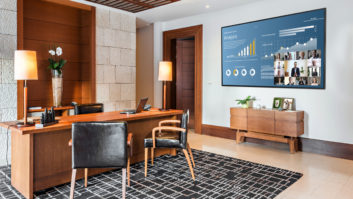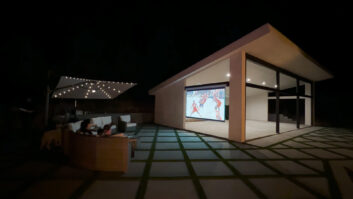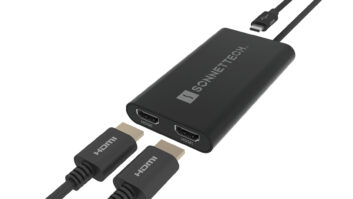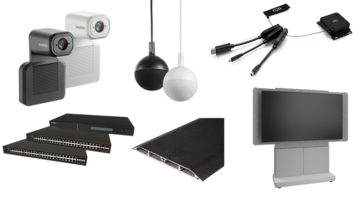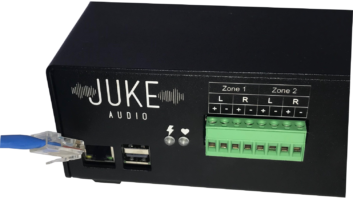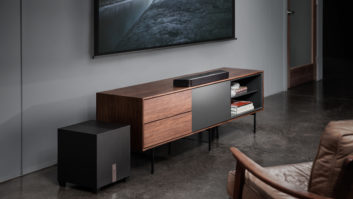iOS Devices Enhance Solutions, But Can’t Replace Them All

Gordon van Zuiden ([email protected]) is president of cyberManor in Los Gatos, California.
Ever since Apple introduced the iPod in October 2001, the company has impacted the solutions our industry provides. Now, with hundreds of millions of iPods, iPhones, iPads, and Apple TVs in our customers’ hands or next to their TVs, Apple is poised to make its biggest impact on our industry to date. As custom integrators, it is imperative that we understand the effect of the Apple ecosystem on the home and the solutions they can provide today and in the near future, and how we can best extend and enhance those solutions for our clients.
iOS Devices–iPod, iPhone, iPad
The affordability and the ease of use of the iPod, iPhone, and iPad have made them the control platform of choice for many of our clients. Every major home control company has a total home control application that now runs on one of these devices. We are also beginning to see these devices becoming remote controls for a number of our entertainment content boxes–witness the iOS applications from TiVO, DirectTV, and Comcast. These controls work over bi-directional wireless communication instead of IR, and they are fast, responsive, and generally very reliable.
But these devices are not just used for control anymore. With so much entertainment content in the cloud (think Netflix, Pandora, Spotify, and Hulu) these devices become entertainment platforms in and of themselves, inside or outside the home. But Apple realizes that this content is often best viewed on a large television screen or heard through better speakers, and developed its AirPort Express and Apple TV products in response.
Airport Express and Apple TV
Airport Express allows you to push your audio content from any of your mobile Apple devices wirelessly to an amplified speaker system. The current limitation is that you can push music to only one Airport Express at a time from an iOS device, so you can’t have synchronized music playing in several zones at a time from a whole house audio amplifier. However, if Apple releases a software upgrade that allows a music stream to several Airport Expresses simultaneously, you may only need a wholehouse amplifier to implement a robust whole-house audio system.

If Apple releases a software upgrade that allows a music stream to several Airport Expresses simultaneously, you may only need a wholehouse amplifier to implement a robust wholehouse audio system.
Even without these advances, AirPlay from iTunes on a computer does work with multiple AirPort Express units at one time and will play synchronized music from any number of these units. And if you are not sitting in front of the computer, you can use the Apple Remote application on iPhone, iPad, or iPod Touch to remotely control iTunes, including turning with this AirPlay feature.
Apple TV provides similar features but is enhanced with its ability to allow some video content (like YouTube or Netflix) to be pushed from mobile platform devices to large-screen TVs. Today the ability to stream video over AirPlay is somewhat limited, but when iOS 5 is released in the fall with a screen-mirroring feature that will allow everything that is shown on the iPad to be shown on your large TV, then it seems logical that any video stream that you can play on your iOS device will now play on a large-screen TV. And this entertainment content mirroring could extend to games as well, allowing the iOS device to function as a game controller.
The Apple rumor mill is predicting Airplay-enabled TV. This would bundle the functionality of the Apple TV product with a large highdefinition screen that could have the same application support as those on their current iOS devices.
What is Missing in the Apple Home?
In the whole-house audio scenario presented here, there are some things missing that might still be needed by a custom integration client. For instance, there are no in-wall keypads even though many of our clients enjoy the ability to control and source music from such a device. And how do all the speakers in the home connect to a central amplifier–or an in-room amplifier–without our professional ability to aesthetically and functionally mount these speakers in the ceiling and home run all the speaker wires?
Also, although Apple might have a line of AppleTV displays in a few different sizes, what happens when a client needs a TV outside of these size ranges? And not all devices that will support this platform will be AirPlay enabled; do you think the Microsoft XBox will ever be AirPlay enabled? So, these types of devices will have to be sourced through a conventional receiver to be displayed on a TV.
And I don’t see Apple getting into the lighting control, motorized window treatment, security systems, and thermostat business anytime soon, so our expertise in those subsystems will be required for many years to come.
The point is that while Apple’s products will continue to enhance the solutions that we sell, they can’t replace all of them. No single manufacturer, even one as powerful as Apple, can ever do that because not every electronic device wears the Apple logo. The custom electronics professional will continue to be the integrator of all these electronic subsystems in the home to enhance the entertainment, communication, and comfort of our clients’ homes. Apple adds great value to these solutions, and our expertise ensures its solutions are complementary to our clients’ needs.

